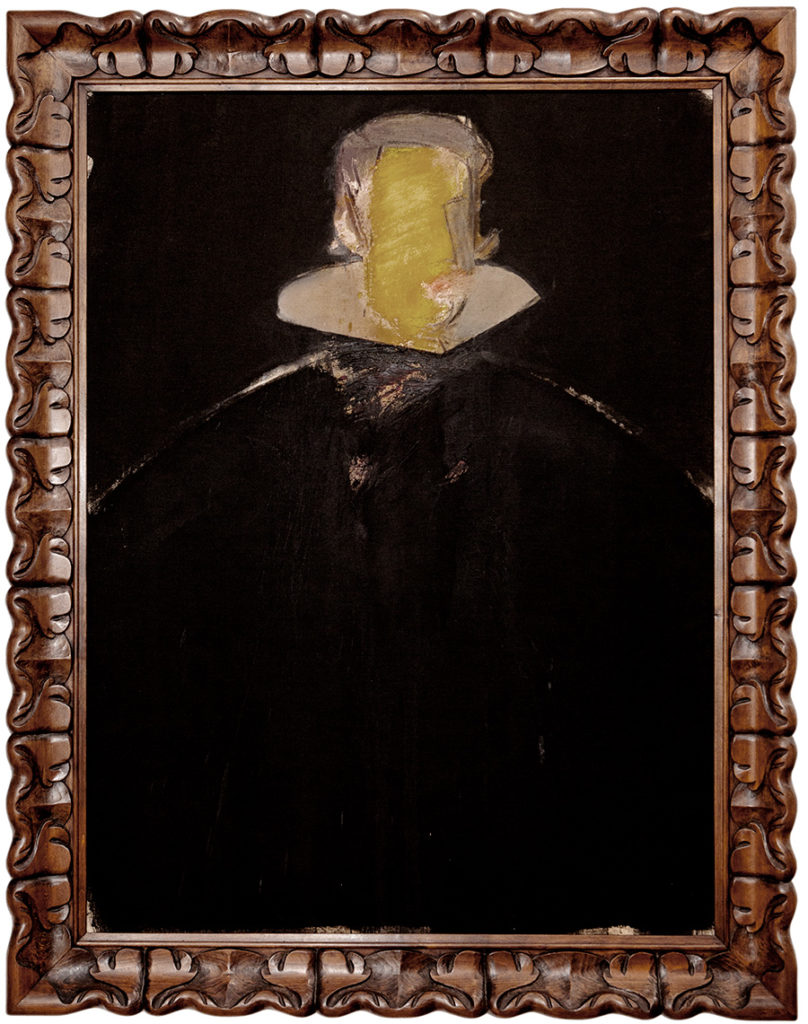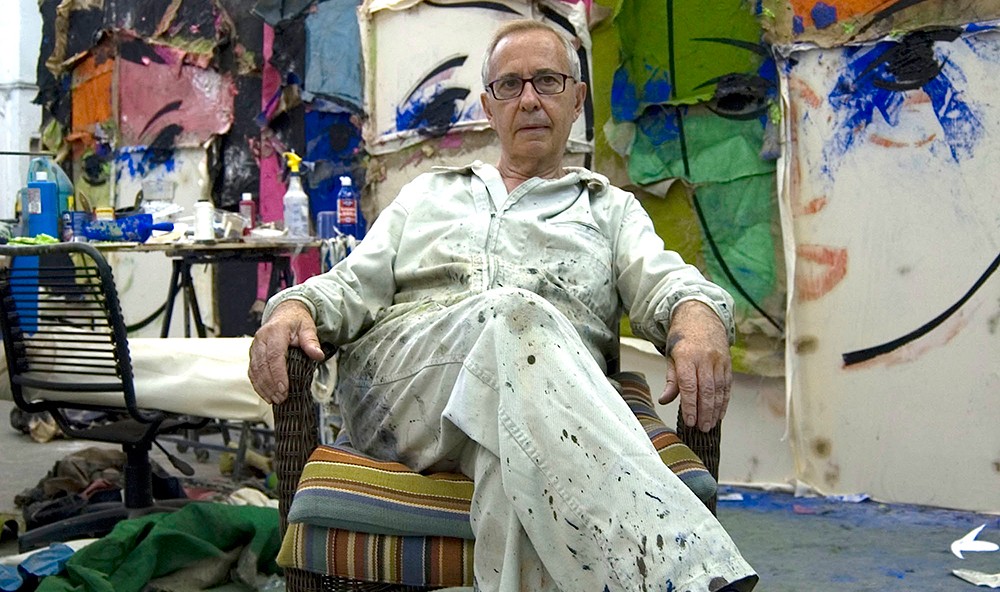Manolo Valdés: a dialogue between the past and the present
Manolo Valdés and Rafael Solbes revolutionized the Spanish art scene in the last years of the Franco regime. They founded Equipo Crónica, and under this signature they were leaders of a politicized and corrosive pop unprecedented in the country. In his works, mass culture and art history overlapped in ingenious palimpsests.
Solbes died in 1981, which meant for Manuel Valdés the start of a solo career that, without abandoning the interest in dialoguing with the painting of the past, would be characterized by a greater reflective refinement to the detriment of the irreverent humor and self-confidence of his stage. previous.
This portrait of Felipe IV, made a year after Equipo Crónica was dissolved, testifies to this process of plastic purification. Part of a Velazquez portrait in which the monarch was represented full-length. In Valdés’s homage, features disappear under synthetic brushstrokes that economize on forms. The ruff is reduced to geometric planes, the same as the court dress. Valdés will return to this portrait in later years, versioning it in a series of “Knights” holding a collage in their right hand, instead of the original letter that Velázquez painted. However, in this first version in oil the king is represented in half body. The chromatic reduction to black, yellow and white endows the figure with spectral intensity, as an archetype loaded with symbolism because it is the depository of a long history of representation of power.
The paintings and engravings of Manolo Valdés show a deep knowledge and a frank admiration for the great masters, from whom he freely took what he considered appropriate instead of contemplating them on their throne, as untouchables. Reinterpreting, versioning and recreating was his motto.
MANOLO VALDÉS BLASCO (Valencia, 1942) was the introducer in Spain of a form of artistic expression that combines political and social commitment with humor and irony. He began his training in 1957, the year in which he entered the School of Fine Arts of San Carlos de Valencia. However, two years later he left his studies to dedicate himself fully to painting. In 1964 he founded the artistic group Equipo Crónica, together with Juan Antonio Toledo and Rafael Solbes, in which he remained until the latter’s death in 1981, despite the fact that Toledo had left the group two years after its foundation. Since then he has settled in New York, the city where he currently resides and where he has continued to experiment with new forms of expression, including sculpture. Among the many awards that Manolo Valdés has obtained, the Lissone and Biella of Milan stand out, the silver medal of the II International Biennial of Engravings of Tokyo, the prize of the Bridgestone Museum of Art in Lisbon, the National Prize of Plastic Arts, the medal of the International Festival of Plastic Artists of Bagdad, the Decoration of the Order of Andrés Bello in Venezuela, the award of the National Council of Monaco, the Gold Medal for Merit of Fine Arts, the Award of the Spanish Association of Art Critics and the Best Print Artist Award, among others.
Formally, Valdés makes a large-format work in which lights and colors express tactile values, due to the treatment given to the materials. Her work forces the observer to inquire into memory and look for significant images from art history. It is represented in some of the most prominent museums around the world, such as the Reina Sofía in Madrid, the Metropolitan, the MoMA and the Guggenheim in New York, the Georges Pompidou Center and the Fons National d’Arts Plastiques in Paris, the Kusnthalle in Hamburg, the Kunstmuseum in Berlin and the Museum of Fine Arts in Bilbao, among many others.



